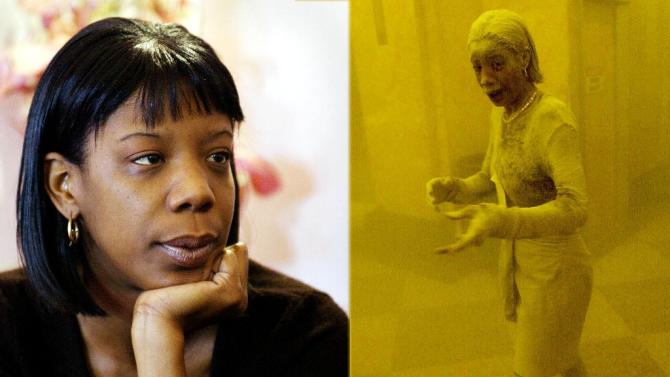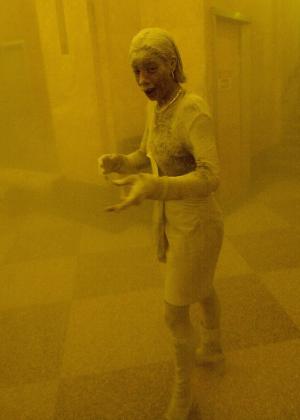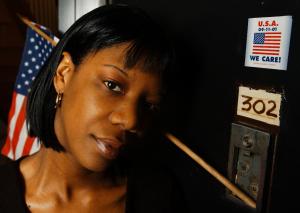Washington (AFP) - A survivor of the September 11, 2001
attacks on New York who was featured in one of the most haunting
photographs of the outrage has died of stomach cancer. She was 42.
The family of Marcy Borders first announced her death Monday on Facebook.
Borders, who was 28 at the time of the attacks, was just one month into a job for Bank of America in one of the Twin Towers.
As
one of the towers collapsed, she took refuge in a nearby office
building, where AFP photographer Stan Honda took a haunting photo of her
completely covered in a thick layer of ash, which earned her the
moniker "The Dust Lady."
The air appeared heavy and a distraught Borders was shrouded in a cloud of dust and backlit by an eerie yellow luminescence.
"I can't believe my sister is gone," her brother Michael Borders wrote on Facebook, asking for people's prayers.
Her cousin Elnardo Borders wrote: "My emotions are all over the place right now."
AFP photographer Stan Honda took this haunting photo of Marcy Borders completely covered in a thick …
He later wrote: "She @ peace now!!!"
After the attacks,
Borders spiraled into a decade-long deep depression and alcohol and drug
abuse, though she eventually recovered.
She lost her job at Bank of America, where she ignored repeated offers of a transfer.
She
spent much of her time sequestered in her two-room flat, in one of the
poorer parts of Bayonne, a bedroom community in New Jersey over the
bridge from Manhattan.
- 'I still live in fear' -
Something inside of her had died on that fateful day.
9/11 survivor Marcy Borders, seen here outside her New Jersey apartment in 2002, struggled with depr …
"I still live in fear. I can't think about being there, in
those targets, the bridges, the tunnels, the (subway) stations," she
told AFP in a whisper in a March 2012 interview.
"The father of my daughter took her ; I can't take care of myself, so I can't take care of her."
Her fridge was empty, and her television had long turned silent.
"I used to watch TV a lot, the TV was never off," she said.
"But now I fear that what happens in Jerusalem will happen here. All that violence... so I leave it off."
Borders
was relying on her mother for food at the time and said no one had
contacted her in the months that followed the attacks and her photo was
beamed around the world.
No aid organizations helped her and no one had told her that mental services were available for free for 9/11 survivors.
"I basically do nothing. I stay indoors ; I feel safe inside," she said.
"I feel like I would have had to be killed in order for my daughter to get something.
"Sometimes,
I think that you have to be the wife of a firefighter or a policeman to
get money. It's so depressing, sometimes you're ready to kill
yourself."
Borders went into
rehab in 2011, and has said that news of the death of Al-Qaeda leader
Osama bin Laden helped her regain peace and recover from her trauma.
Her family said she had fought cancer for a year.
After
her diagnosis, she suggested in interviews that her exposure to
chemical pollutants emitted by the World Trade Center collapse likely
had a role in her illness.












































No comments:
Post a Comment